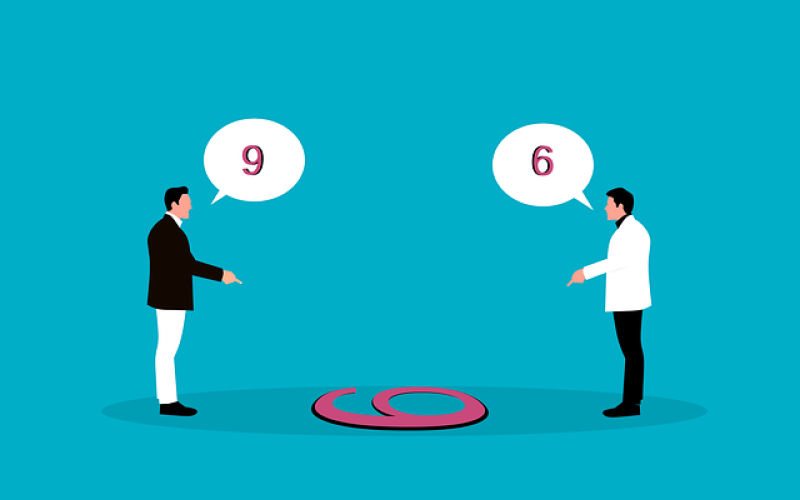
As a mediation and conflict resolution specialist and with my books The Collaboration Effect and Peaceful Resolutions, I recently conducted additional research on this topic. Stepping back and looking at the big picture, I wanted to share with you what I see as the seven keys to avoiding and resolving conflict. These are authentic connecting relationships, listening actively, practicing empathy, avoiding blame, using “I” statements, having clear boundaries, and taking a break. These are each elaborated on in this commentary.
1. Authentic connecting relationships
The Collaboration Effect is about developing authentic connecting relationships, listening actively, and educating judiciously to build bridges and negotiate closure. When interacting with others, values matter. Focusing on common values goes a long way toward developing a relationship of understanding. Being proactive and building the relationship first goes a long way to preventing conflicts instead of trying to build a relationship after you are in conflict.
2. Listening actively
Listening actively takes effort and practice. Our natural tendency while someone else is speaking is to think about what we want to say and promote our agenda. Listening actively involves 100% attention, asking clarifying and open-ended questions, paraphrasing, summarizing, and ensuring understanding of feelings. When the other person is speaking, think about what else you may want to ask. This takes a concentrated effort on your part. However, when someone has been listened to, they are far more apt to listen to you. In this five-minute video on “How to Argue,” Dr. Daniel Shapiro from Harvard suggests you listen actively for at least 10 minutes.
3. Practicing empathy
Understanding someone else's feelings is the key to practicing empathy. You need to put yourself in the other person’s shoes and imagine how it would feel to be in their situation. When you think you know the other person's feelings, try to articulate them with them. They will let you know if you have it right or not. If you don’t, that is fine; listen and reframe your commentary to demonstrate that you are paying attention and want to understand. You may not like this person or want to have a relationship with this person, but being curious and seeking to understand this can help de-escalate the situation and help you work towards a resolution.
4. Avoiding blame
Avoid the two stinky twins of BO and BS. That is blaming others and blaming self. Blame only makes the situation worse. By focusing on the problem and working together, it may be possible to devise a solution that works for both parties. Suppose you can approach this with the attitude that this is an opportunity and that we are responsible for addressing the issues together. In that case, this may assist you in partnering with the other party. Instead of providing feedback, focus on feed-forward and what we can do together from now on. It is up to us.
5. Using “I” statements
When expressing your perspective, thoughts, or emotions, use “I” statements rather than “you” statements. For example, instead of “You never listen to me,” try “I feel unheard when discussing these issues.” This is hard. It takes concentrated thought. Your natural inclination is to want to blame and focus on the other party rather than yourself. With these kinds of statements, the natural tendency is to de-escalate the situation and encourage dialogue between the parties. From the commentary above, apply active listening and avoid blame.
6. Having clear boundaries
Everyone needs their space. Respecting others' space is critical in a relationship. You need to honor this in yourself and others. Do you or they need time to reflect and determine the next steps? Consider personality types associated with introversion versus extroversion, analytical versus feeling, intuitive versus sensory, and judgmental versus perceiving (open, flexible, adaptable). Allowing for high degrees of autonomy can actually help build connections. The stress response is associated with control, progress, and predictability. The more the other person has a sense of control (don’t micro-manage), progress (celebrate small successes), and predictability (what will happen, for example, with an agenda), the less stress there will be in a relationship.
7. Pause, take a break
When you feel yourself beginning to escalate, recognize this feeling and take a five-second pause. When you become angry, you do not think clearly. You may say or do something you may regret later. This can be a potent tool for your toolbox. If, during negotiation, tempers are beginning to flare, suggest a break. It turns out physiologically that this gives the nervous system a chance to recalibrate, allowing your mind to reflect on the situation from a broader perspective. You will have the opportunity to expand your perspective and consider the consequences of your actions. By cooling off, you can also reflect on the items above regarding listening actively, practicing empathy, being responsible, and using “I” statements.
Summary
In summary, authentic connecting relationships, listening actively, practicing empathy, avoiding blame, using “I” statements, having clear boundaries, and pausing or taking a break are ways to avoid and resolve conflict. The point is to understand and carry these out actively. We often nod our heads to agree and then forget what we learned. In this case, I challenge you to write these down or print out this article and begin to repair, work to avoid, or apply these elements to your conflicts. There is no one-size-fits-all, but if you consciously know and carry these out, you may be surprised at the result. There is no one-size-fits-all, but these seven secrets may make a huge difference in your relationship with someone else.
Check out these links if you need assistance, want to learn more about collaboration conflict resolution, or enhance your Servant Manager skills.
